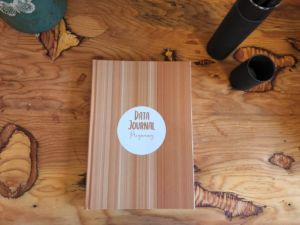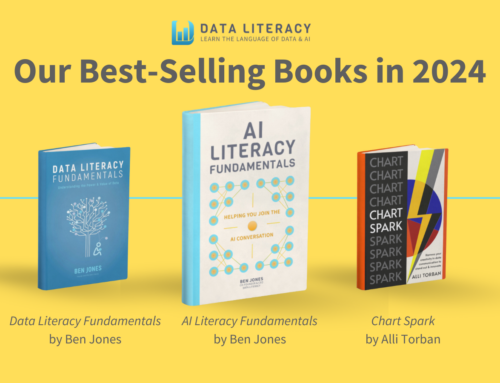Data Journaling: The Power and Potential of Qualitative Data Through the Lens of a Mom-to-be
Rebecca Gourley is a multimedia storyteller with a background in journalism and design. She’s a self-proclaimed nerd with interests in gaming, coding, hiking, crafts and plant-keeping. She’s been involved in data visualization work for the last couple of years and recently completed the Certificate in Data Visualization program at the University of Washington in June 2021. She lives in the Seattle area with her fiancé Ryan and two fur-kids, Ziva (dog) and Gary (cat). The family will welcome their first child in July 2022.
Half-baked ideas are rarely considered good in business, but half-baked babies are a cause for celebration!
Writing this, I’m currently a little more than halfway through my first pregnancy, eagerly awaiting the July arrival of our newest addition: Lilibet, or Lily.
My fiancé and I have been thinking about starting a family for a few years now, but with 2020 being what it was, that plan got put on the back burner.
The silver lining was that I had more time to explore a new data journal idea I had brewing. My first data journal helps folks track wellness information; this new edition tracks — you guessed it — pregnancy.

The newest data journal, which tracks a person’s pregnancy, is hardcover and provides space on both the cover and spine to write the name of the child.
When I was sketching out the design and listing what data points I wanted to track with it, I was reminded of how nerve-wracking pregnancy can be, especially in the first trimester.
Pregnant people are often bombarded with information about what they should and shouldn’t eat during pregnancy, how much they should weigh, how much sleep they should get, what activities are OK to do, etc. Along with this bombardment comes the guilt: Am I doing enough? Am I eating enough? Too much? Are these the right prenatal vitamins? I didn’t want this data journal to be an unintentional conduit for that guilt.
I decided to narrow down what I wanted to include by first listing what I definitely did not want in the journal. Data points like food choices, weight and sleep can be sensitive subjects for pregnant people. For me, there were oftentimes in the early stages of my pregnancy when I thought I was the worst mom-to-be because I couldn’t stomach any vegetables and I found it so hard to sleep through the night — and I’ve had pretty mild pregnancy symptoms compared to a lot of people.
With this data journal, I want to provide a space for people to track their pregnancy in a healthy way that doesn’t cause any emotional or psychological distress. That’s why most of the data is qualitative as opposed to quantitative. Instead of a food tracker, I included a space for listing cravings and aversions. In place of a sleep or activity tracker, I made a vitamin and water tracker.
The journal is meant to be a “pre-baby” book. Something to look back on and remember what most people might forget about their pregnancy: what date you felt the first kick, when you heard the heartbeat for the first time and what foods you asked your significant other to go to the store for at 11 p.m. on a Tuesday.
My favorite part of the book is what happens once the baby is born. On the last page of the journal is an empty radial chart to fill in using the two quantitative data points the journal has asked for since week 4: Your belly measurement (in millimeters to make it easier) and the average external temperature of your area or city for each week of the pregnancy.
With a place for the baby’s name and a small photo, parents have a memento of the “conditions in which the baby was baked” — the size of their “house” and the season — to frame and put in the nursery.
For me, the journal has also been a place to write notes to myself to bring up at my next doctor’s appointment. As my energy levels have improved, I’ve also been using the intentionally big white spaces to track things like walks or other activities.
During my 20-week appointment with my OB-Gyn, I showed her the journal and she loved it. She commented that this will be great to look back on once the baby is here so that I can remember all of these special (and challenging) moments. And I couldn’t agree more.
Both editions of the Data Journal are available on Amazon through Rebecca’s shop page. Read more about the first edition here.






